Most tourists know Amsterdam for its famous museums, picturesque canals, and bicycle-filled streets. But there’s another side to this remarkable city that reveals itself through flavors and aromas – its rich culinary culture. Dutch cuisine is much more than cheese and herring, though both play crucial roles in the country’s gastronomic story. Amsterdam’s food scene is a fascinating blend of centuries-old traditions, colonial influences, and modern innovation that creates a unique culinary landscape waiting to be discovered.

Contents
- 1 Secrets of Dutch Cheese: Beyond Edam and Gouda
- 2 From Herring to Smoked Eel: Fish Traditions of a Maritime City
- 3 Sweet Secrets: From Stroopwafel to Traditional Apple Pie
- 4 Brown Cafés and Jenever: Where Real Amsterdam Drinks
- 5 Modern Gastronomy Scene: How Young Chefs Reimagine Traditions
- 6 Secrets of Dutch Cheese: Beyond Edam and Gouda
- 7 From Herring to Smoked Eel: Fish Traditions of a Maritime City
- 8 Sweet Secrets: From Stroopwafel to Traditional Apple Pie
- 9 Brown Cafés and Jenever: Where Real Amsterdam Drinks
- 10 Modern Gastronomy Scene: How Young Chefs Reimagine Traditions
- 11 Discovering Gastronomic Amsterdam: Practical Tips
- 12 Conclusion: The Taste of a City That Stays With You
A Plate Full of History: How Colonial Past Shaped Amsterdam’s Flavors
Amsterdam has always been a city of merchants and seafarers. During the Dutch Golden Age in the 17th century, it was through Amsterdam’s port that exotic spices from Asia, coffee from the colonies, and cocoa from the Americas entered Europe. These products didn’t just pass through – they settled in the city, becoming integral parts of local culinary traditions.
The Dutch East India Company’s influence on Amsterdam’s cuisine cannot be overstated. Established in 1602, the VOC was granted a monopoly to carry out trade activities in Asia, fundamentally changing European access to exotic ingredients. Spices like nutmeg, cinnamon, and cloves, once worth more than gold, became staples in Dutch cooking. The city’s merchants didn’t just trade these precious commodities; they incorporated them into their daily meals, creating unique flavor combinations that persist today.
Today’s Amsterdam offers a remarkable fusion of traditional Dutch cuisine with influences from Indonesian, Surinamese, and other cuisines from former colonies. This colonial legacy has created one of Europe’s most diverse and exciting food scenes, where you can sample authentic rijsttafel (Indonesian rice table) just steps away from a traditional Dutch brown café serving centuries-old recipes. As noted in culinary research, Dutch cuisine was fundamentally shaped by colonial trade, when “the Dutch ruled the spice trade, played a pivotal role in the global spread of coffee, and started the modern era of chocolate.”
Secrets of Dutch Cheese: Beyond Edam and Gouda
When people think of Dutch cheese, most only consider Edam and Gouda. But true connoisseurs know that Amsterdam harbors dozens of local cheese varieties, each with its own story and special preparation method. The city’s cheese culture runs far deeper than the floating flower market’s tourist-friendly selections.
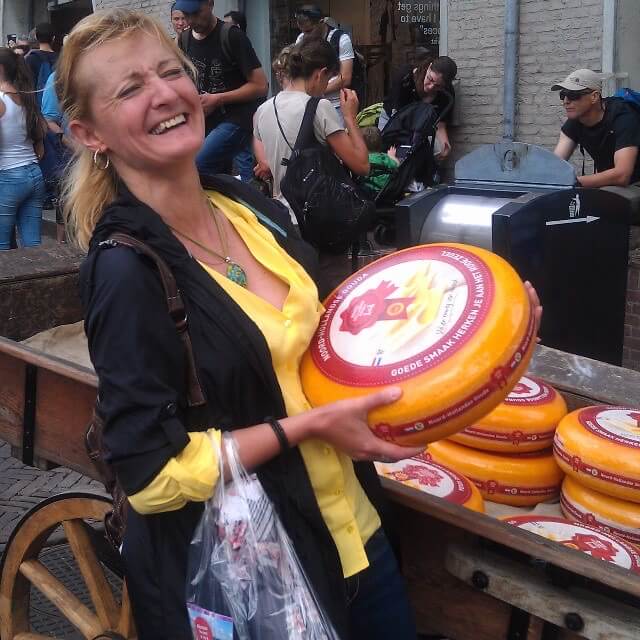
In Amsterdam’s old cheese shops, you’ll find varieties that age in cellars using recipes passed down through generations. Each neighborhood once had its own cheese-making traditions, and some of these family businesses continue operating today. The country’s geographic location on the fertile Rhine-Meuse-Scheldt delta at the North Sea gave rise to fishing, farming, and overseas trade that fundamentally shaped its culinary traditions. Due to the availability of water and flat grassland, Dutch cuisine contains many dairy products, making cheese culture an integral part of the national identity.
Local residents know the secret of proper cheese presentation: it should be eaten not with bread, but with mustard or honey, paired with young beer or jenever.
The seasonal variations in Dutch cheese tell the story of the Netherlands’ agricultural calendar. Spring cheese, made when cows first return to fresh pastures, has a completely different character from winter cheese. Summer varieties benefit from the richness of peak grazing season, while aged cheeses develop complex flavors that can rival the world’s finest wine.
Visiting a traditional kaaswinkel (cheese shop) is like stepping into a living museum. The shopkeepers are encyclopedias of cheese knowledge, able to recommend the perfect variety for any occasion and explain the nuances that distinguish one farm’s production from another’s.
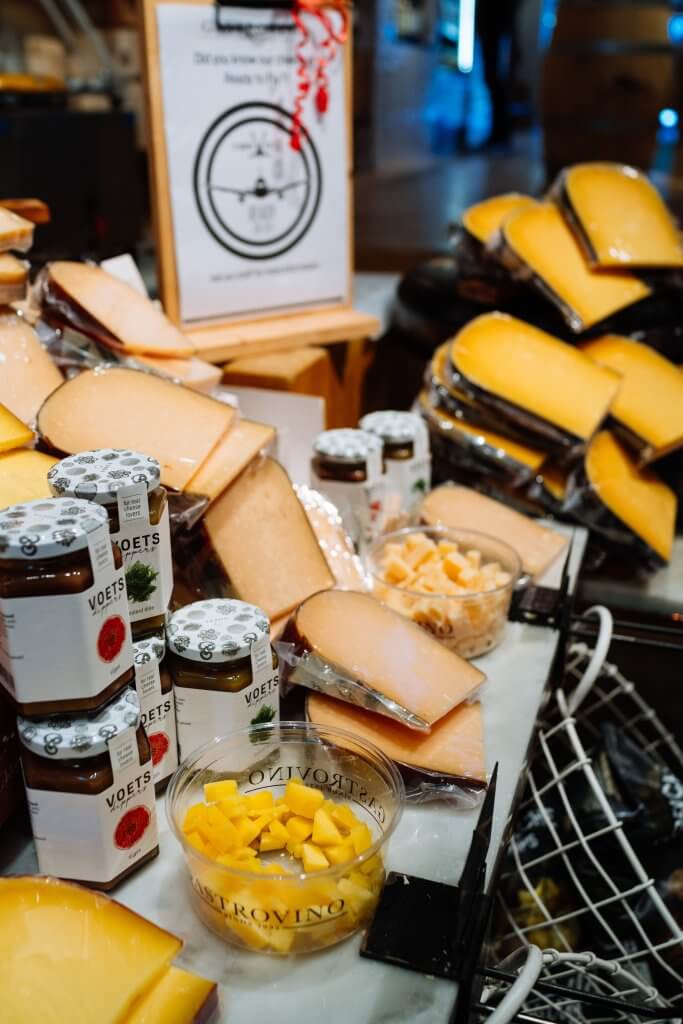
From Herring to Smoked Eel: Fish Traditions of a Maritime City
Herring in Amsterdam is more than food – it’s a ritual steeped in centuries of maritime tradition. Properly prepared herring must be cleaned using a special technique that preserves the fish’s tenderness and distinctive flavor. The traditional method, called “gibbing,” removes the gills and gut while leaving the pancreas, which contains enzymes crucial for the fish’s characteristic taste.
Locals eat herring by holding it by the tail and taking small bites, always accompanied by finely chopped onions and sometimes pickles. This isn’t just tradition – it’s the optimal way to experience the fish’s delicate flavor profile. The best herring vendors in Amsterdam can trace their techniques back generations, and they take pride in maintaining these time-honored methods.
But herring is just the beginning of the city’s fish menu. Smoked eel, considered a delicacy, requires days of careful preparation using traditional smoking techniques. Kibbeling, chunks of fried cod served with mayonnaise-based sauces, represents the more casual side of Dutch fish culture. These dishes await discovery in hidden corners of the city, far from typical tourist routes.
The annual arrival of the first new herring (Hollandse Nieuwe) in late spring or early summer is celebrated throughout the city. This seasonal delicacy, which must be eaten within days of preparation, represents the pinnacle of Dutch fish culture and draws long lines of eager locals to the best fish stalls.
Sweet Secrets: From Stroopwafel to Traditional Apple Pie

Dutch sweets deserve their own chapter in Amsterdam’s culinary story. The famous stroopwafel (syrup waffle) takes on new meaning when experienced in its birthplace. Here, they’re served hot directly from the iron, when the caramel syrup is still molten and aromatic. The contrast between the crispy waffle exterior and the warm, flowing caramel center creates a sensory experience impossible to replicate with packaged versions.
Traditional Dutch apple pie (appeltaart) in Amsterdam differs significantly from apple desserts worldwide. Its secret lies in a special blend of spices and a preparation method where apples slowly stew in their own juices with cinnamon and nutmeg. The result is a dense, richly flavored cake that’s more about the spices and technique than the apples themselves.
Poffertjes, tiny pancakes traditionally served with powdered sugar and butter, represent another unique aspect of Dutch sweet culture. These small, fluffy treats require special pans and techniques passed down through generations. The best poffertjes vendors in Amsterdam have been perfecting their craft for decades, creating light, airy pancakes that dissolve on the tongue.
Dutch chocolate culture, influenced by centuries of cocoa trading, produces confections that rival Belgium’s famous chocolates. Local chocolatiers create unique combinations using traditional Dutch flavors like jenever, cheese, and exotic spices from the colonial era.
Brown Cafés and Jenever: Where Real Amsterdam Drinks
“Brown cafés” (bruine café) represent the soul of Amsterdam’s drinking culture. These ancient establishments, their walls darkened by centuries of tobacco smoke, preserve the atmosphere of old Amsterdam and traditions of consuming local beverages. Each brown café has its own character, often reflecting the neighborhood’s history and the proprietor’s family traditions.
Jenever, Dutch juniper gin and the predecessor to modern gin, follows specific consumption rules in these establishments. It’s served in small tulip-shaped glasses filled to the brim, and tradition dictates that the first sip should be taken without lifting the glass, by leaning down to it. This ritual isn’t mere ceremony – it’s designed to appreciate the spirit’s complex aroma and ensure the proper tasting sequence.
The variety of jenever available in Amsterdam’s brown cafés ranges from young, clear varieties to aged, complex spirits that rival fine whisky. Each distillery has its own recipe and aging process, creating distinct flavor profiles that locals can identify blindfolded.
These establishments also serve as community centers, where neighbors gather to discuss local affairs, celebrate important events, and maintain social connections that bind Amsterdam’s diverse communities together.
Modern Gastronomy Scene: How Young Chefs Reimagine Traditions
Contemporary Amsterdam is experiencing a genuine culinary renaissance. Young chefs are taking traditional Dutch ingredients and creating entirely new dishes, combining ancestral heritage with modern techniques. This movement represents more than just updating old recipes – it’s about rediscovering the potential of ingredients that were taken for granted.
In the city’s trendy neighborhoods, restaurants are opening that serve “updated Dutch cuisine.” This might include croquettes with exotic fillings, herring prepared using molecular gastronomy techniques, or desserts inspired by childhood memories of grandmother’s recipes but executed with contemporary presentation and technique.
These innovative chefs aren’t abandoning tradition – they’re building upon it. They work closely with local producers, from cheese makers to fishermen, ensuring that their modern interpretations maintain a connection to authentic Dutch flavors while appealing to contemporary palates.
The farm-to-table movement has found particular resonance in Amsterdam, where chefs partner directly with Dutch farmers to source ingredients that reflect the seasons and the country’s agricultural heritage. This creates menus that change throughout the year, offering diners a taste of the Netherlands’ natural calendar.
Secrets of Dutch Cheese: Beyond Edam and Gouda
When people think of Dutch cheese, most only consider Edam and Gouda. But true connoisseurs know that Amsterdam harbors dozens of local cheese varieties, each with its own story and special preparation method. The city’s cheese culture runs far deeper than the floating flower market’s tourist-friendly selections.
In Amsterdam’s old cheese shops, you’ll find varieties that age in cellars using recipes passed down through generations. Each neighborhood once had its own cheese-making traditions, and some of these family businesses continue operating today. The country’s geographic location on the fertile Rhine-Meuse-Scheldt delta at the North Sea gave rise to fishing, farming, and overseas trade that fundamentally shaped its culinary traditions. Due to the availability of water and flat grassland, Dutch cuisine contains many dairy products, making cheese culture an integral part of the national identity.
Local residents know the secret of proper cheese presentation: it should be eaten not with bread, but with mustard or honey, paired with young beer or jenever.
The seasonal variations in Dutch cheese tell the story of the Netherlands’ agricultural calendar. Spring cheese, made when cows first return to fresh pastures, has a completely different character from winter cheese. Summer varieties benefit from the richness of peak grazing season, while aged cheeses develop complex flavors that can rival the world’s finest wine.
Visiting a traditional kaaswinkel (cheese shop) is like stepping into a living museum. The shopkeepers are encyclopedias of cheese knowledge, able to recommend the perfect variety for any occasion and explain the nuances that distinguish one farm’s production from another’s.
From Herring to Smoked Eel: Fish Traditions of a Maritime City
Herring in Amsterdam is more than food – it’s a ritual steeped in centuries of maritime tradition. Properly prepared herring must be cleaned using a special technique that preserves the fish’s tenderness and distinctive flavor. The traditional method, called “gibbing,” removes the gills and gut while leaving the pancreas, which contains enzymes crucial for the fish’s characteristic taste.
Locals eat herring by holding it by the tail and taking small bites, always accompanied by finely chopped onions and sometimes pickles. This isn’t just tradition – it’s the optimal way to experience the fish’s delicate flavor profile. The best herring vendors in Amsterdam can trace their techniques back generations, and they take pride in maintaining these time-honored methods.
But herring is just the beginning of the city’s fish menu. Smoked eel, considered a delicacy, requires days of careful preparation using traditional smoking techniques. Kibbeling, chunks of fried cod served with mayonnaise-based sauces, represents the more casual side of Dutch fish culture. These dishes await discovery in hidden corners of the city, far from typical tourist routes.
The annual arrival of the first new herring (Hollandse Nieuwe) in late spring or early summer is celebrated throughout the city. This seasonal delicacy, which must be eaten within days of preparation, represents the pinnacle of Dutch fish culture and draws long lines of eager locals to the best fish stalls.
Sweet Secrets: From Stroopwafel to Traditional Apple Pie
Dutch sweets deserve their own chapter in Amsterdam’s culinary story. The famous stroopwafel (syrup waffle) takes on new meaning when experienced in its birthplace. Here, they’re served hot directly from the iron, when the caramel syrup is still molten and aromatic. The contrast between the crispy waffle exterior and the warm, flowing caramel center creates a sensory experience impossible to replicate with packaged versions.
Traditional Dutch apple pie (appeltaart) in Amsterdam differs significantly from apple desserts worldwide. Its secret lies in a special blend of spices and a preparation method where apples slowly stew in their own juices with cinnamon and nutmeg. The result is a dense, richly flavored cake that’s more about the spices and technique than the apples themselves.
Poffertjes, tiny pancakes traditionally served with powdered sugar and butter, represent another unique aspect of Dutch sweet culture. These small, fluffy treats require special pans and techniques passed down through generations. The best poffertjes vendors in Amsterdam have been perfecting their craft for decades, creating light, airy pancakes that dissolve on the tongue.
Dutch chocolate culture, influenced by centuries of cocoa trading, produces confections that rival Belgium’s famous chocolates. Local chocolatiers create unique combinations using traditional Dutch flavors like jenever, cheese, and exotic spices from the colonial era.
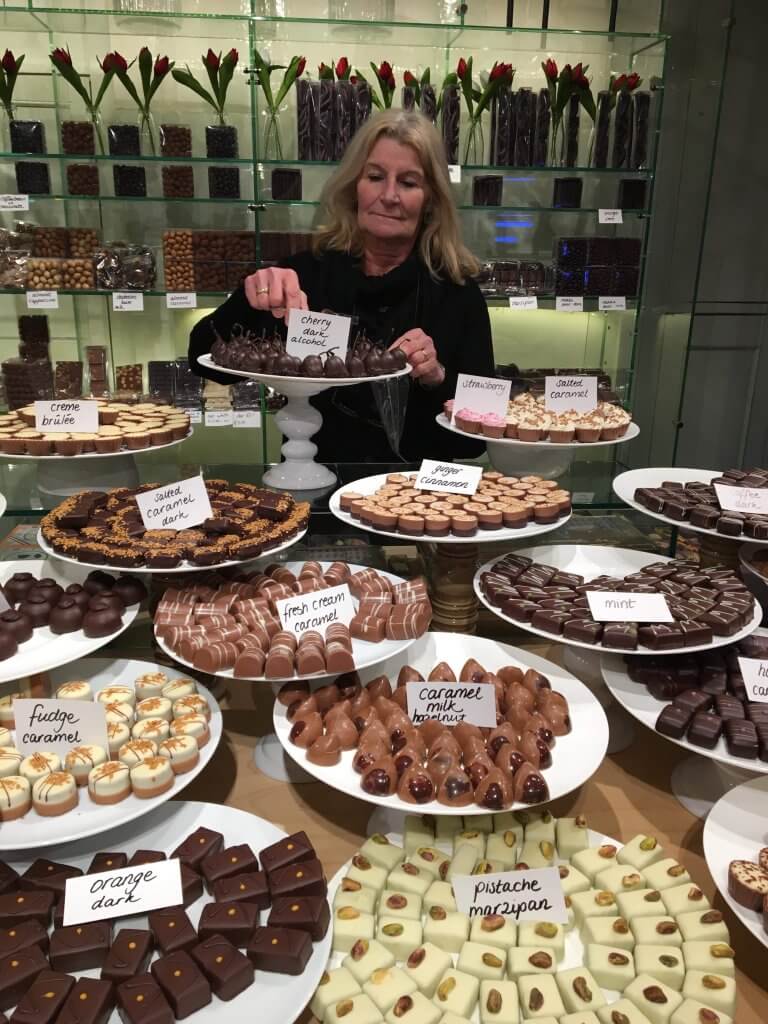
Brown Cafés and Jenever: Where Real Amsterdam Drinks
“Brown cafés” (bruine café) represent the soul of Amsterdam’s drinking culture. These ancient establishments, their walls darkened by centuries of tobacco smoke, preserve the atmosphere of old Amsterdam and traditions of consuming local beverages. Each brown café has its own character, often reflecting the neighborhood’s history and the proprietor’s family traditions.
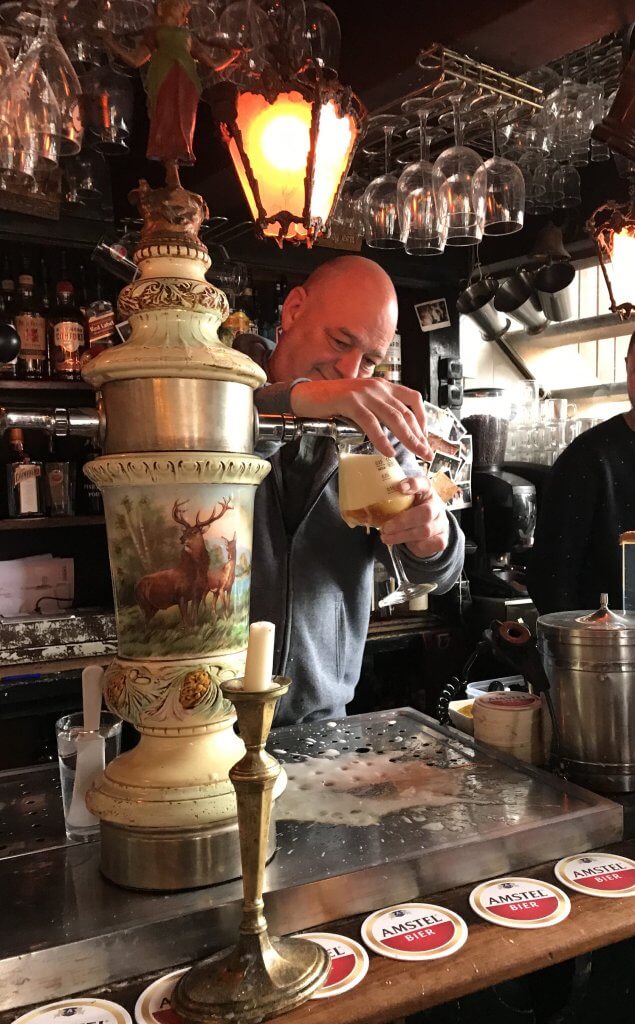
Jenever, Dutch juniper gin and the predecessor to modern gin, follows specific consumption rules in these establishments. It’s served in small tulip-shaped glasses filled to the brim, and tradition dictates that the first sip should be taken without lifting the glass, by leaning down to it. This ritual isn’t mere ceremony – it’s designed to appreciate the spirit’s complex aroma and ensure the proper tasting sequence.
The variety of jenever available in Amsterdam’s brown cafés ranges from young, clear varieties to aged, complex spirits that rival fine whisky. Each distillery has its own recipe and aging process, creating distinct flavor profiles that locals can identify blindfolded.
These establishments also serve as community centers, where neighbors gather to discuss local affairs, celebrate important events, and maintain social connections that bind Amsterdam’s diverse communities together.
Modern Gastronomy Scene: How Young Chefs Reimagine Traditions
Contemporary Amsterdam is experiencing a genuine culinary renaissance. Young chefs are taking traditional Dutch ingredients and creating entirely new dishes, combining ancestral heritage with modern techniques. This movement represents more than just updating old recipes – it’s about rediscovering the potential of ingredients that were taken for granted.
In the city’s trendy neighborhoods, restaurants are opening that serve “updated Dutch cuisine.” This might include croquettes with exotic fillings, herring prepared using molecular gastronomy techniques, or desserts inspired by childhood memories of grandmother’s recipes but executed with contemporary presentation and technique.
These innovative chefs aren’t abandoning tradition – they’re building upon it. They work closely with local producers, from cheese makers to fishermen, ensuring that their modern interpretations maintain a connection to authentic Dutch flavors while appealing to contemporary palates.
The farm-to-table movement has found particular resonance in Amsterdam, where chefs partner directly with Dutch farmers to source ingredients that reflect the seasons and the country’s agricultural heritage. This creates menus that change throughout the year, offering diners a taste of the Netherlands’ natural calendar.
Discovering Gastronomic Amsterdam: Practical Tips
Where to Find Authentic Flavors
The best gastronomic discoveries await not in tourist restaurants on main squares, but in small family establishments in residential neighborhoods. Look for places where locals eat – lines of Amsterdam residents are always a good sign. These neighborhood gems often have no English menus, but the proprietors are usually happy to explain their specialties to curious visitors.
Markets offer excellent opportunities to sample local products and interact with vendors who can share stories about each item’s history. The Albert Cuyp Market on Saturdays provides a perfect introduction to local ingredients, from fresh cheeses to exotic spices brought by immigrant communities.
Street food culture in Amsterdam extends beyond typical tourist fare. Local favorites include fresh stroopwafels from market vendors, herring from traditional fish stalls, and seasonal specialties that appear and disappear with the calendar.
Timing Your Exploration
Different times of year offer distinct culinary experiences in Amsterdam. Spring brings new herring and fresh cheeses, while summer offers outdoor dining and seasonal produce. Fall and winter provide opportunities to experience hearty traditional dishes and warming beverages that have sustained locals through centuries of cold weather.
Weekday visits to traditional establishments often provide more authentic experiences, as weekend crowds can dilute the intimate atmosphere that makes these places special. Early morning visits to markets offer the best selection and opportunities to interact with vendors before tourist crowds arrive.
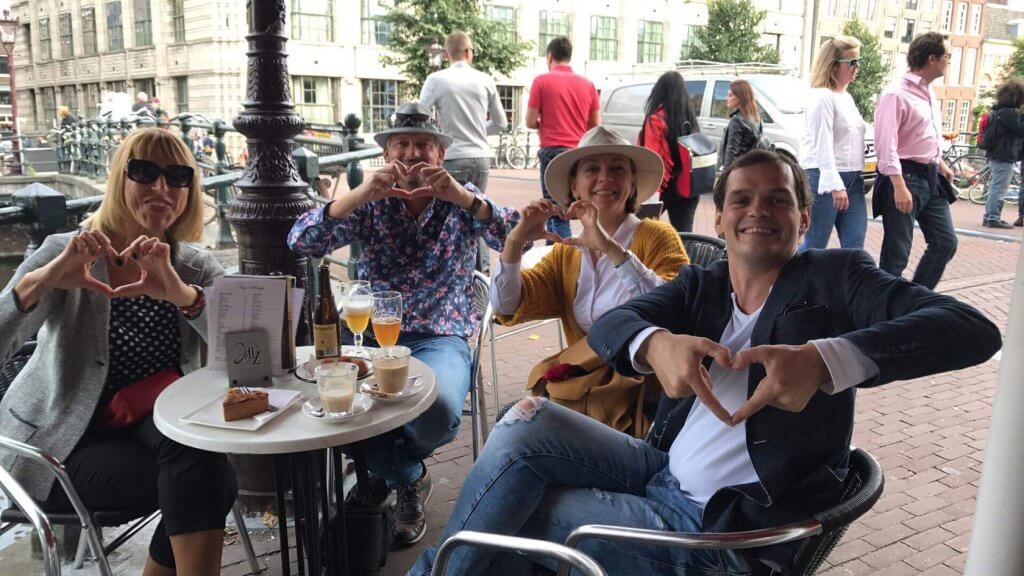
Secret Food Tours: Immersing in Culinary Culture
For those wanting to dive deep into Amsterdam’s gastronomic culture, specialized food tours provide unique opportunities to discover the city through its flavors. Secret food tours in Amsterdam offer chances to explore the city’s culinary secrets with local experts who understand the stories behind each dish.
These tours include visits to authentic establishments, tastings of traditional foods, and introductions to Dutch culinary history from local guides who grew up with these traditions. Participants gain access to places tourists typically never find independently: family cheese shops, ancient fish vendors, secret confectioneries, and genuine brown cafés where time seems suspended.
Professional food tours also provide cultural context that independent exploration might miss. Guides explain not just what you’re eating, but why these foods developed, how they reflect Amsterdam’s history, and their role in contemporary Dutch life.
Seasonal Specialties of Amsterdam Cuisine
Spring: Fresh Cheeses and New Herring
Spring brings special flavors to Amsterdam. This is when new herring appears – a delicacy locals anticipate all year. The first catch of young herring has a completely different character from preserved varieties available year-round. Fresh spring cheeses possess particular tenderness and lightness that reflects the season’s renewal.
Spring also marks the return of fresh vegetables to local markets after winter’s preserved foods. Local chefs celebrate this transition with special menus highlighting the contrast between winter’s hearty dishes and spring’s lighter fare.
Summer: Open-Air Food Festivals
Summer months mean street food and festivals. City parks host picnics featuring local delicacies, while café terraces serve refreshing dishes with seasonal vegetables. The long daylight hours of Dutch summers create perfect conditions for outdoor dining and food exploration.
Summer festivals often feature foods from Amsterdam’s diverse immigrant communities, creating opportunities to taste how different cultures have adapted their traditional recipes to local ingredients and Dutch tastes.
Autumn and Winter: Warming Traditions
Cold weather brings hearty dishes and warming beverages. Winter is the ideal time to sample traditional Dutch soups, hot croquettes, and mulled wine prepared according to local recipes. These comfort foods have sustained Amsterdam residents through centuries of harsh winters.
Winter also marks the season for aged cheeses and preserved foods that showcase traditional Dutch preservation techniques developed to survive long, cold months when fresh ingredients were scarce.
Conclusion: The Taste of a City That Stays With You
Amsterdam viewed through its culinary traditions reveals an entirely different character. This is a city where every dish tells a story, where flavors connect present with past, and where local traditions coexist peacefully with culinary innovations. The city’s food culture reflects its history as a global trading center, its resilience through difficult periods, and its openness to influences from around the world.
A gastronomic journey through Amsterdam isn’t just about tasting dishes – it’s about immersing yourself in the city’s culture, meeting its residents, and understanding what makes this place special. The flavors of Amsterdam create lasting memories that extend far beyond the meal itself.
Experiencing authentic Amsterdam cuisine even once creates a permanent connection to this remarkable city. The taste memories become part of your personal travel story, a sensory reminder of the people you met, the places you discovered, and the traditions you experienced.
Whether you’re sampling aged cheese in a centuries-old shop, enjoying herring from a traditional fish stall, or discovering innovative interpretations of classic dishes in a modern restaurant, Amsterdam’s food scene offers something for every palate and interest level.
Ready to discover gastronomic Amsterdam? Plan your culinary adventure in advance and don’t limit yourself to tourist destinations. The most vibrant taste experiences await those willing to venture off beaten paths and trust local traditions.
This post has been contributed by my guest author - Ekaterina A. She is a passionate traveler who loves studying different cultures and how they interact. That means she travel a lot - not as a tourist, but with full immersion in local life, at the intersection of anthropology, psychology, and sociology.
You might also like these posts –
